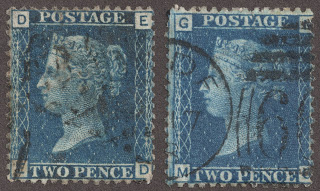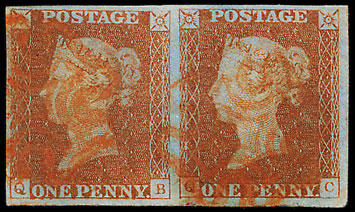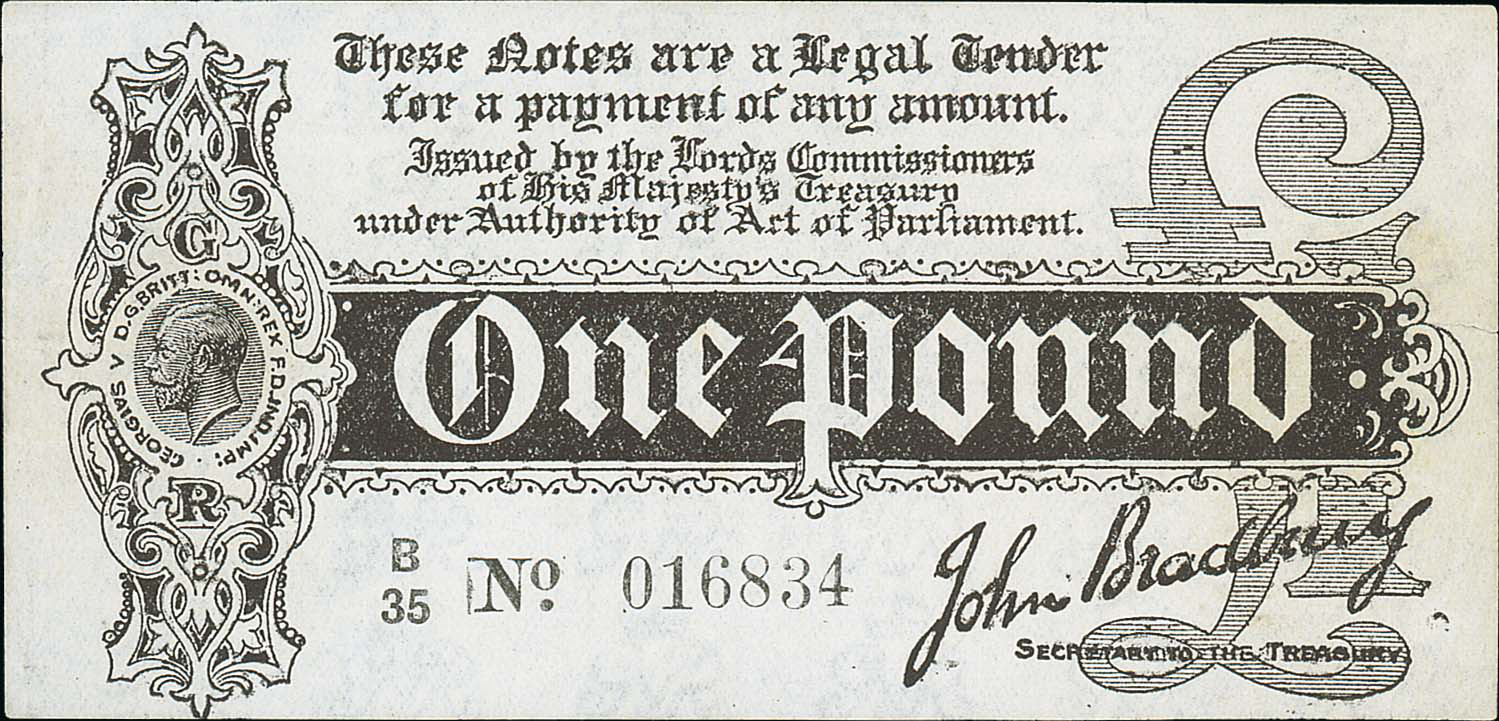Stamp errors are often highly prized by philatelic investors and collectors.
The reason stamps with printing errors are so desirable is because their defects have unintentionally created some of the rarest and most visually striking stamps in the world.
Some errors can result in a stamp being valued thousands of times more highly than normal, although this also depends on other factors like condition and rarity. At the other end of the scale, some rare error stamps are so obscure that they attract only the attention of a few specialist collectors.
Although the stamp printing process has become more automated in recent years, the reign of Queen Elizabeth II is actually considered to be the golden era of British stamp errors for collectors.
With such a wide range of striking stamp errors to collect, some of which are surprisingly affordable, this area of philately is one of the fastest growing in terms of popularity.

Striking omission: This GB 1967 Discoveries 1/9d “missing gold (Queen’s head)” is the only known example of its kind. In December 2014, it realised £23,600 including the buyers' premium here at Warwick & Warwick.
What are stamp errors?
A postage stamp error refers to any of several types of failures which can occur in the stamp production process, resulting in the finished product not appearing as intended. It encompasses everything from major design errors and missing parts of the design to the use of wrong colours, incorrect denominations and misplaced or inverted design elements.
Philatelists reserve the term ‘error’ for obvious production failures. Printing plate cracks, wear and other flaws such as repairs or re-entries are not considered to be errors.
The following are widely-used definitions which are accepted and used within the collecting community:
Errors: Error stamps have serious visual mistakes that are repeatable, which have come about because of a failure at some stage in the printing process. This means the stamps do not appear as intended and, as a result, are very scarce.
Freaks: Freaks have minor variations or less serious defects, caused by a one-time error in the stamp production process, which make the stamp unusable. Unlike major errors, which are much more desirable to collectors, they do not massively boost the value of a stamp although the most visually striking examples are worth a little bit more.
Why are stamp errors rare?
From design and engraving, to colouring, printing and perforation; stamp errors can occur at every stage of production.
Every part of the printing and production process is strictly controlled by the postal authorities in order to spot and address any issues before stamps go on public sale. Nevertheless, oversights happen.
But because of these stringent quality controls, the number of stamp errors which are issued is extremely limited.
It is for this reason that errors, freaks or oddities that have been obtained dishonestly by employees of the printers are not recognised as legitimate by philatelists. Instead, they are referred to as printer’s waste, which can be confiscated from collectors by the authorities – although this is extremely rare.
This is why collectors only view error stamps as being valid if the item was legitimately sold to a customer by the postal authorities.
Stamp error terminology explained
Many different factors cause postage stamp errors – and the following is a comprehensive list of the main types of error:
Design error: A postage stamp design error occurs when a mistake has been made during the design phase of production. This can range from a minor mistake such as a missing letter in the name of a subject to more serious errors such as the wrong picture of a subject, out of date maps, misspelled text or an inscription that is factually incorrect.
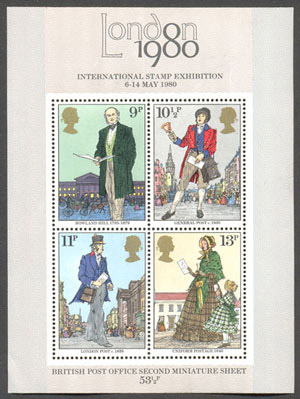
Rare error of Denomination: This beautiful 1979 Rowland Hill miniature commemorative sheet contained denominations of 9p, 10½p, 11p and 13p instead of 10p, 11½p, 13p and 15p.
Denomination error: Sometimes known as a substituted subject, a denomination error is a stamp which has the wrong denomination on it. This could mean a high-value denomination has been printed on a design which is meant to be of a lower value or vice versa.
Omission error: When part of a stamp’s design is missing, this is referred to as an omission error stamp – and usually happens because of a fault in the design stage of production.
Overprint errors: Applying an extra layer of text or design to a stamp’s surface after printing is known as an overprint. Used mainly for administrative reasons, commemorative inscriptions are sometimes added to make a stamp more appealing. Added by postal offices, which have far lower levels of quality control compared to a printing house, overprint errors can significantly raise the value of a stamp.
Inverted overprint: This is the name given to a stamp where the overprint is upside down in relation to the design of the stamp.
Missing overprint: Some stamps are only valid for postage when overprinted, and occasionally stamps without the overprint are issued in error.
Wrong overprint: When an overprint which is intended for another stamp is used incorrectly.
Double impression: Sometimes known as a double transfer, this happens when a stamp or overprint of the same design is printed twice, with one impression slightly offset from the other. Depending how the sheet of stamps has passed through the printing machine on the second occasion, it can result in a partial or full impression of the original design which could be straight, mirrored or reversed.
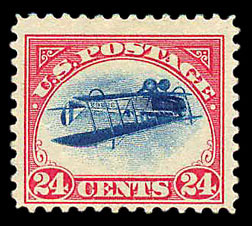
World famous error: This mint USA 1918 inverted “Jenny” realised £184,000 including the buyer’s premium here at Warwick & Warwick in an auction on March 4th 2009. It is arguably one of the three icons of world philately.
Invert errors: Inverts occur when one or more elements of a postage stamp’s design are printed upside down. They are caused when a stamp sheet that requires a multi-coloured impression is inserted into a printing press the wrong way round.
There are two basic variations which collectors need to know about this error:
- An inverted frame error is much less distinctive and only affects the frame orientation.
- An inverted centre is a type of invert error where only the central piece of the design is inverted.
Invert error stamps are viewed by philatelists as the most spectacular type of error because of their noticeable appearance and their rarity. Because of this, these stamps usually attract much higher values.
Colour error: A colour error occurs when a stamp has been printed in the wrong colour or with one or more of the intended colours missing. For designs where more than one colour ink is required, occasionally the wrong ink is used in the printing machine at one stage of a multi-run printing process.
Colour shift error: A colour shift stamp error occurs when one or more of the printing cylinders are out of register, causing overlapping colours to create an interesting effect. One of the most common stamp errors, it happens when a stamp is meant to pass through multiple presses for each different colour but one is applied in an offset fashion. The value of a colour shift error depends on how dramatic the resulting appearance is.
Missing colour error: When one or more colours are missing, it is usually because part of a multi-run printing process is missed. This can lead to major design features being omitted and often creates colour-omitted error stamps which are striking in appearance. Because older stamp designs featured fewer colours, which meant colour omissions were easier to notice, this type of error is more common in modern stamps.
Watermark errors: Used to prevent counterfeiting and to give stamps a distinctive appearance, the watermark process can often result in errors. Inverted, sideways or missing watermarks all occur and are of considerable interest to collectors.
Inverted watermark: These are produced when a sheet of watermarked paper is fed into the printing press upside down and are generally of considerable interest. However, on some stamps of the Victorian era watermark sheets would be fed into the presses without regard to the orientation of the watermark. The experts at Warwick and Warwick know which stamp with inverted watermarks are rare.
Paper error: This occurs when a stamp is printed on the wrong type of paper. For example, the paper used may have a different watermark, colour or thickness than was originally intended.
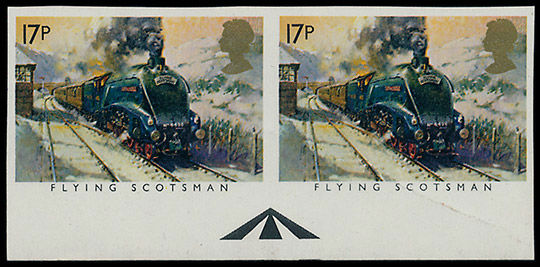
Imperforate Error: Great Britain 1985 Trains 17p imperforate pair UM.
Imperforate errors: Sometimes referred to as a perforation error, this occurs when perforations are missing from one or several sides of a stamp.
Perforations are a series of small holes or apertures which are designed to enable easier separation of the stamps in a sheet. Because perforations can be removed by trimming, philatelists only collect imperforate errors in pairs, blocks or sheets.
Imperforate errors occur more frequently in coil stamps, where printing tends to be automated and there is little opportunity to check for faults. They are much less common in sheets of stamps – where more stringent quality control standards apply.
There are three main variations of perforation errors found in sheets of stamps:
Imperforate between: The external sides of a pair of stamps are perforated correctly, but perforations which should exist between the pair are missing.
Horizontally imperforate: A stamp sheet which doesn’t have any horizontal perforations, but does display its vertical ones.
Vertically imperforate: A stamp sheet which has no vertical perforations, but does have its horizontal ones as normal.
Philatelists use the number of perforations to distinguish between different printings or issues of stamps with the same design. Because of their rarity and popularity with collectors, sheets of stamps with misperforations are worth considerably more in value.
Misperforation: Often known as a perforation shift, a misperf relates to any inappropriate puncturing of a stamp sheet. Caused because the sheet is not properly aligned with the perforating equipment, it can result in the perforation holes disfiguring the design of a stamp. The impact on value depends on the severity of the shift, and as a general rule, the more dramatic the error, the more it will be worth. A stamp sheet may also be accidentally folded over before it’s passed through the perforating machine. The folded part will become inappropriately punctured which can affect one or more of the stamps in a sheet and causes the design to be either partially printed or leave a blank space.
Tête-bêche errors: Occasionally one cliché (engraved die) on a plate is entered upside down in relation to the other clichés and philatelists collect such items in pairs or blocks. They are sometimes referred to as ‘head to tail errors’ and are quite rare.
Blind perf errors: Blind perforations are caused when a hole is not completely punched out.
Offset errors: Considered to be a minor mistake, offset errors can be identified because they have a normal impression on the stamp’s front and an offset reversed impression on the reverse of the stamp.
Over-inking: Applying an excessive amount of ink to a printing plate causes an overly heavy impression which may make the stamp’s design unrecognizable.
Under-inking: Applying too little ink to a plate, usually at the end of a printing run, which can result in a very faint design which lacks colour and distinction.
Ink smears: A rarer occurrence than under-inking or over-inking, this is caused by applying an uneven distribution of ink to a plate which then smears to affect part of the stamp’s design.
Albino errors: When the inking stage is completely missed, it can leave a blank impression or engraved image of the design with no colour which is known to philatelists as an albino printing.
Phosphor band errors: Although these are usually barely visible, missing phosphor bands or coatings result in some highly collectable stamps, particularly for British philatelists.
Gum errors: Stamps may be gummed on both sides, on the wrong side, or with the wrong gum. In the early years of stamp production, gum was manually applied between the printing and perforating process. Nowadays the application of gum is fully automated, with pregummed paper used for the majority of stamps.
Miscuts: Miscut errors happen when a stamp sheet is misaligned with the guillotine blades, creating a shift across the entire sheet and causing the perforations not to coincide with the stamps' borders. Miscuts can result in just a few millimetres being clipped off a stamp design or a complete shift of the central image that results in a portion of an adjacent stamp coming into view. This is most common in coil stamps, which are produced in rolls, and stamp booklets where panes can be incorrectly guillotined.
Unprinted areas: Caused by foreign objects becoming embedded on the stamp.
How do these factors impact on an error stamp's value?
The important thing to remember with error stamps is that their beauty always lies in the eye of the beholder.
In reality, the value of stamp errors is always speculative. Their true worth is only ever realised when they come to market.
The visual appeal and relative scarcity of a stamp error will ultimately define its philatelic value.
The more obvious the error or more visible the printing mistake, the more collectors are willing to pay. Likewise, the rarer an error stamp is; the more it is worth.
If a certain type of error is known to exist in very limited quantities, they are prized by collectors and investors who are willing to pay significantly more to acquire them.
Obviously, the condition of error stamps also has a major effect on their value; the better their condition, the more they are worth.
For this reason, error stamps that display rich colours, neat perforations and a crystal-clear design or subject at their centre are worth significantly more than poor error stamps with an obscure or off-centre design.
Researching the value of stamp errors which are in your possession can be both an exhilarating and interesting experience.
But if you want to obtain an accurate valuation without spending hours doing so, our experts can help to simplify the entire process.
To take advantage of this free valuation service, email ‘Stamp Error Valuation’ and your contact details to info@warwickandwarwick.com or call 01926 499031 for an informal discussion.

